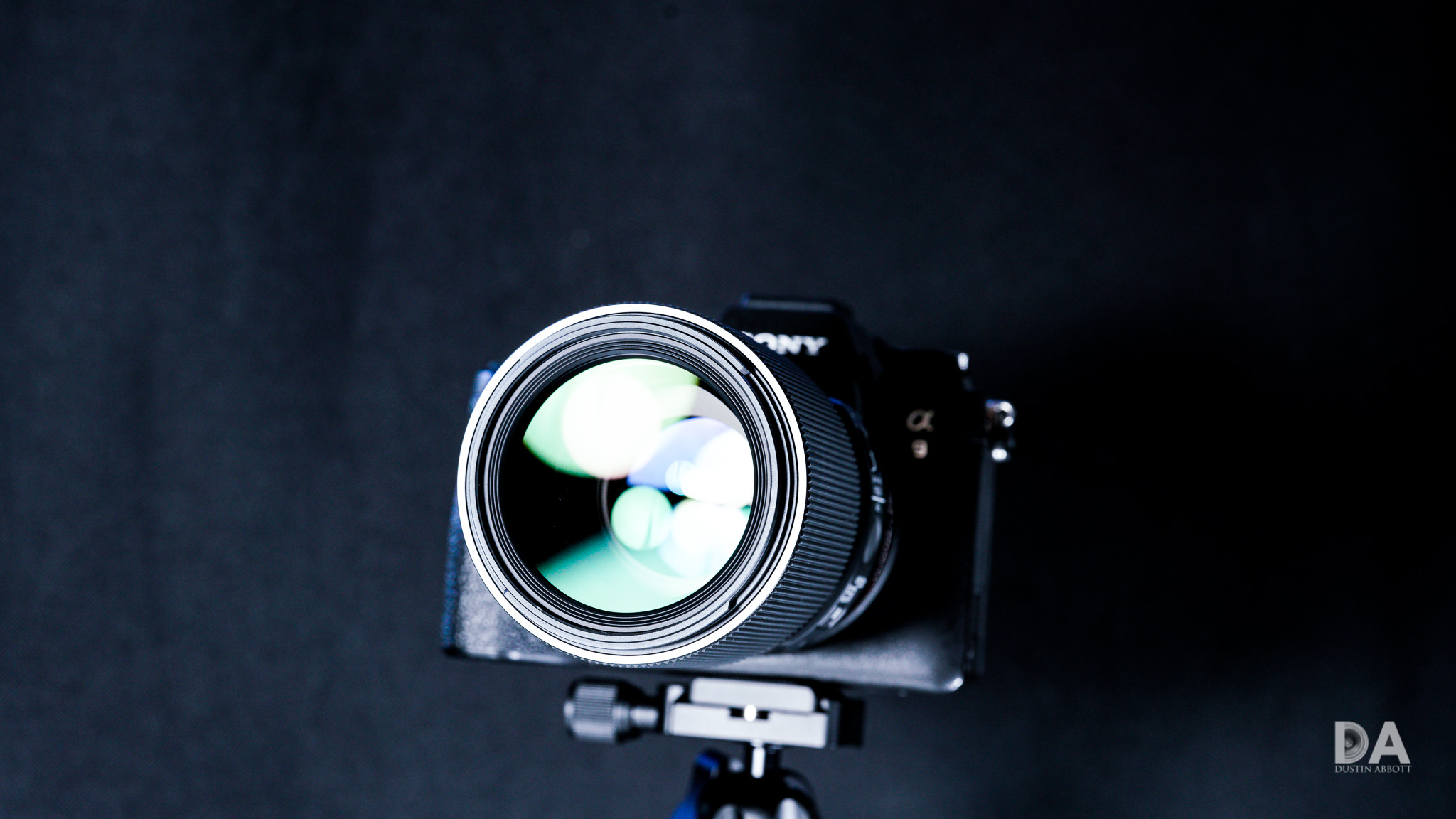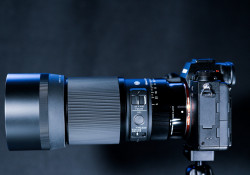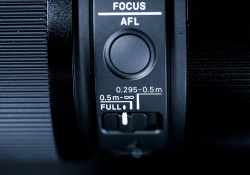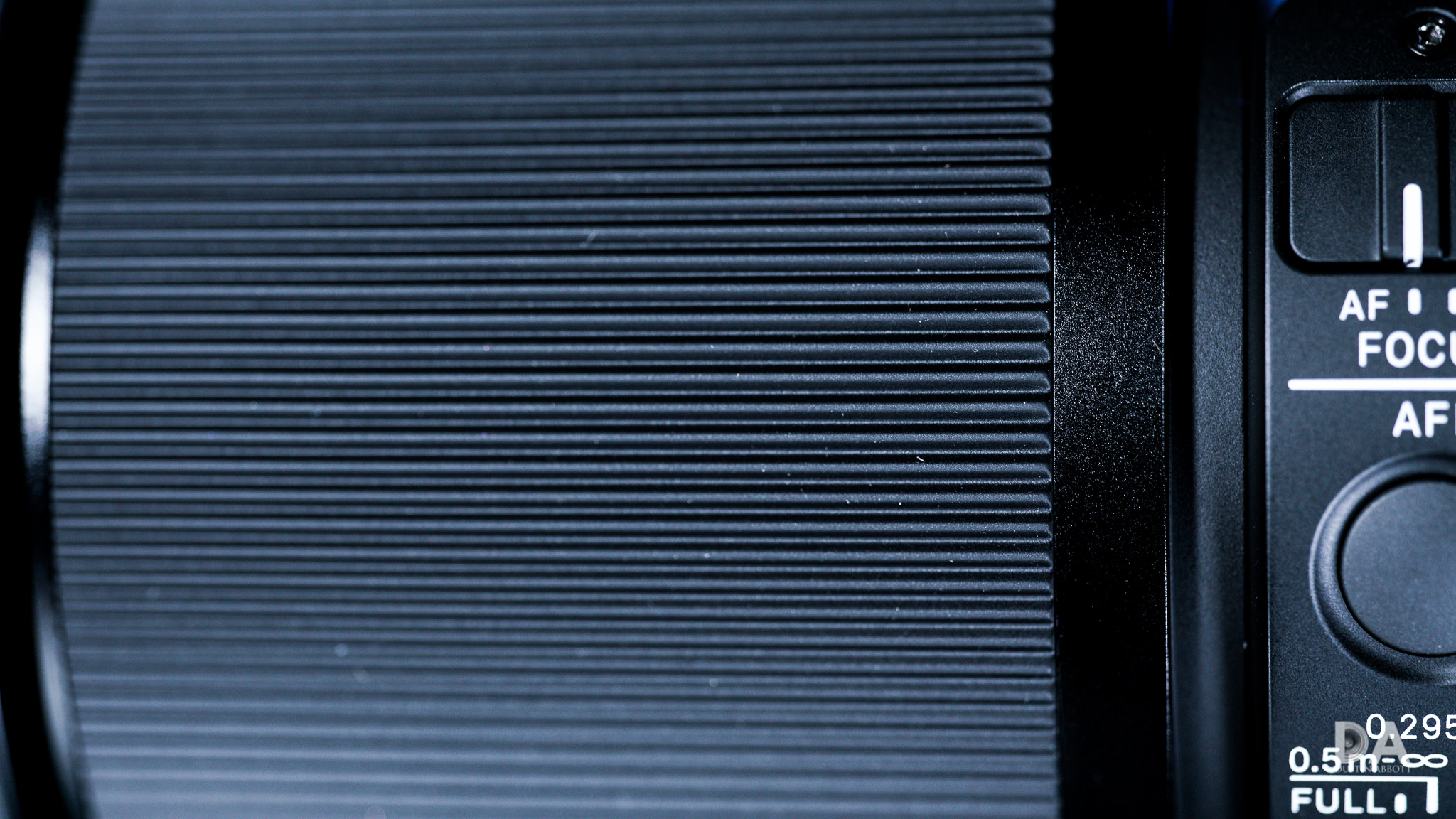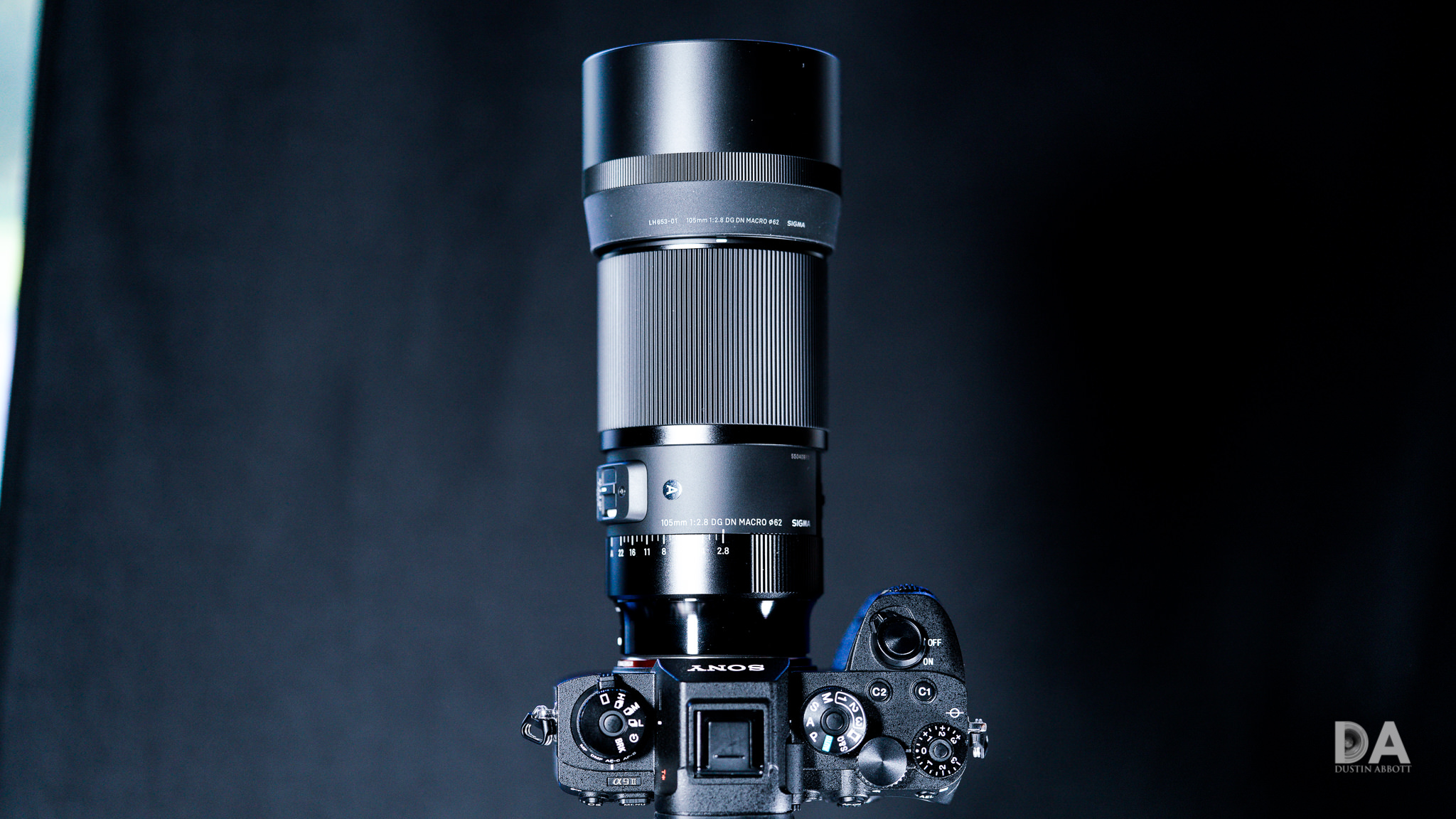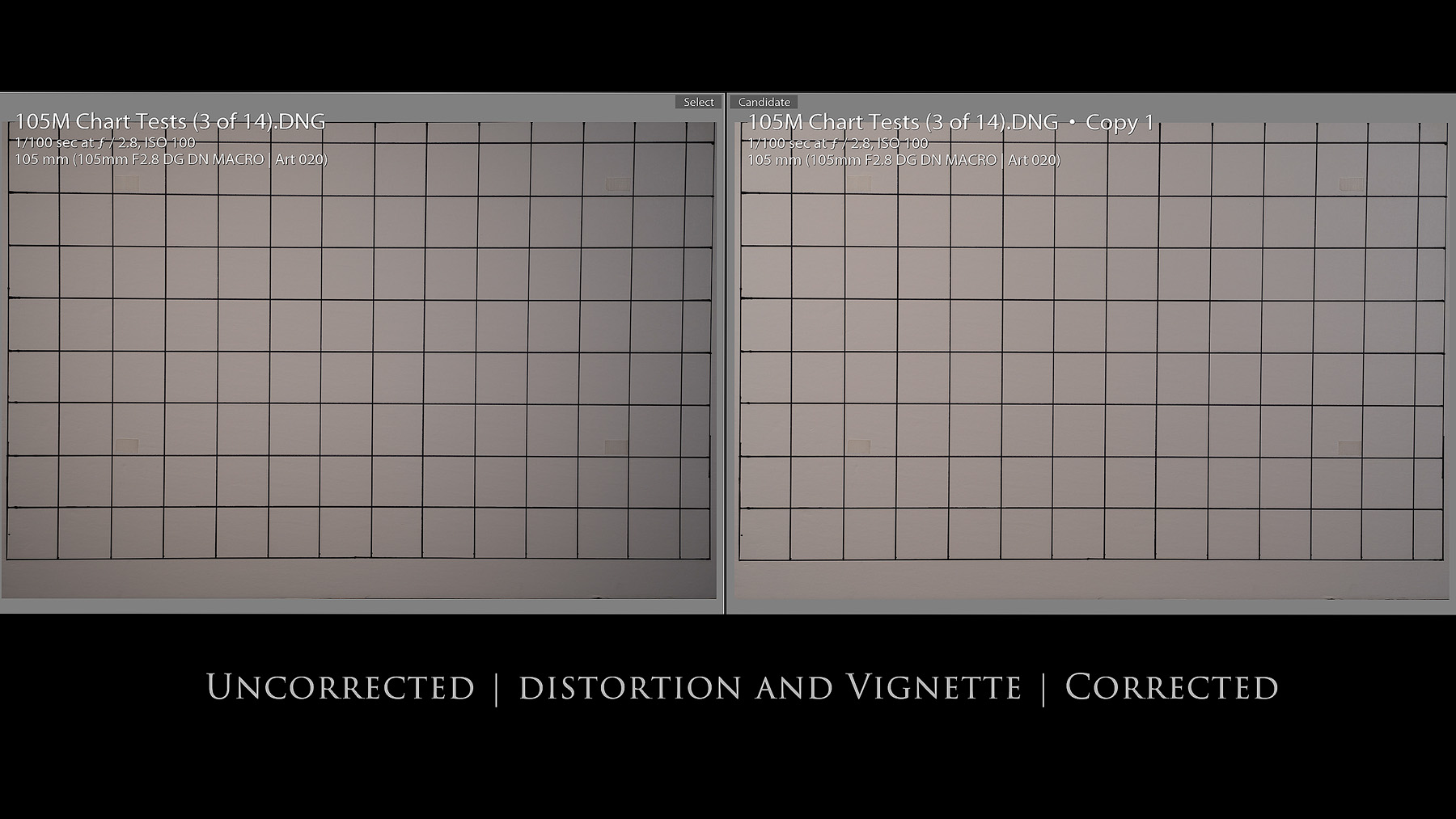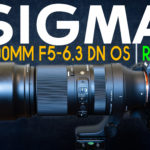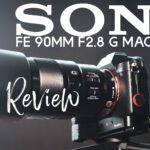Sigma’s 105mm F2.8 Macro lens is perhaps the most popular of it’s pre “ART Series revival” reinvention in 2013. I still get a lot of questions about it today, mostly because it is a good lens with an image stabilizer and a reasonable price. It’s ironic, however, that I noted at the end of my review of the Sony 90mm F2.8 G Macro recently that there were few real competitors for the Sony macro lens on the platform, as just a few days later I received word from Sigma telling me about a new Sigma 105mm F2.8 DN Macro designed for Sony FE and Leica L, and asking if I’d be willing to look at a pre-release copy. I agreed, of course, but laughingly told my contact how things had transpired. After reviewing the lens, however, I can attest to the fact that it is a true competitor to the Sony lens, with both lenses achieving outstanding performances with a few wins going to one lens or the other. The 105M (as we’ll call it for brevity), is an optical powerhouse.
We will explore both those strengths and weaknesses as a part of this review today. One core distinction between the lenses, however, is that one (the Sony) is stabilized while the Sigma is not. That’s a bit surprising, mostly because the 2012 105mm F2.8 Macro did have OS (Optical Stabilizer). At that point, however, the idea of in-body-image-stabilization (IBIS) was still a future invention, so in-lens stabilization was the only path to stabilizing the lens. Today that’s no longer the case, and the new 105M is designed for Sony FE and Leica L – two systems where most of the cameras have IBIS. In fact, I found that I got better stabilization results with the newer Sony a9II that I happened to be testing at the same time when the 105M was attached than my slightly older a9 or a7RIII bodies. With the a9II, I would say my stability results came close to what I saw with the Sony 90G Macro, but I felt I needed to keep shutter speeds up a bit more with my older bodies. I got this macro shot at 1/8th second in poor light handheld with the a9II and 105M, which is pretty impressive.
But the point is that when you don’t have OS in the lens, it does create some variability on how good stability will be depending on your camera body. In a few camera bodies, in fact, there will be no stability. Clearly that could be a factor for some of you to consider before purchasing. With all of the three cameras I used in this test, however, I was able to get good handheld macro shots by utilizing good technique.
The big trick up Sigma’s sleeve is price: the Sony costs $1099 USD; the Sigma will retail at $799 USD. That’s a significant difference, obviously, that may be an ever greater factor for other potential buyers. But why don’t we dig deeper than just what you can find on a spec sheet? We’ll explore all the details in this review, so read on…or you can choose to watch your review with either the Definitive (long format) or Standard video review:
I’ve reviewed the Sigma 105mm F2.8 DN Macro on my Sony a7RIII and Sony a9 bodies along with a loaner Sony a9M2 and am sharing photos from all cameras here. Thanks to Sigma for an early loaner!
Follow Me @ Patreon | My Newsletter | Instagram | Facebook | Twitter | Flickr | 500px
Sigma 105M Build and Handling
Sigma has done an impressive job in designing these new DN lenses to have a feature set that rivals that of the premium G Master series from Sony. We’ll detail these in a moment, but first, we can see from the raw specs that the new 105M is about what we would expect in terms of size and weight:
It’s a little longer and is heavier than the Sony lens, but at 105mm it is also a longer focal length that heads further into telephoto range. I find the size and weight to be reasonable relative to performance. I’ve got only one quibble on the design front – like the Sony 90mm, the Sigma has a 62mm front filter thread. I can remember only three lenses off the top of my head that have had that filter size (there’s probably a couple of more I’ve forgotten), but I would much preferred to the see them design around the much more common standard of 67mm, a filter sized shared with MANY other lenses. It’s unlikely you have any 62mm filters sitting around, as they just aren’t that common. Uncommon enough, in fact, that there will be plenty of filters that just don’t come in a 62mm size, limiting your options.
As noted, there are a number of new features on the 105M that very much bring it in line with G Master lenses despite this lens being at a price point no GM will sit. These features include a multi-faceted approach to aperture, including an aperture ring with the option of using the “clicked” version (with one-third stop detents) or, with the flip of a switch, a fully declicked version that will allow for aperture racking for video. One new Sigma-unique feature is an aperture lock switch, which you can engage either in the manual aperture portion (this will keep you from inadvertently sliding into “A” [Auto] position, particularly important if doing aperture racks), or you can engage it when you are Auto aperture mode to make you that you don’t inadvertently bump the ring and change the aperture without noticing.
This really gives users the best of all worlds, as for those who don’t like an aperture ring, you can use the lock and just control the aperture from within the camera (or allow the camera to control aperture) without being concerned about an inadvertent bump of the ring. You can use the manual aperture ring with clicks (my personal preference), or declick it if preferred. This is the option that the GM lens gives you as well, though it doesn’t have the aperture lock. Score one for Sigma!
The aperture iris itself features the standard nine rounded blades.
The 105M also sports an AF/MF switch, a focus hold button, and a three position focus limiter.
The latter allows you to select the full range, to eliminate all the macro possibilities for normal shooting, or to focus solely on the macro range. This is a 1:1 macro lens, and that magnification occurs at 11.6″ / 29.5 cm. Here’s the tiny text off of a German Deutschmark looks like at 1:1:
Very impressive, and you can probably already tell that contrast is fantastic with this lens!
The focus ring itself is nicely ribbed, well positioned, and works nicely. It has good damping and will trigger an automatic focus assist (magnification of the focus area in the viewfinder or on the LCD) when you start to turn it in either MF or DMF modes.
This highlights the primary area that I strongly prefer the Sony lens, though. The Sony 90G Macro employs an amazing clutch mechanism that allows one to have a true manual focus experience (hard stops, distance markings, better tactile feedback). It’s a great lens to manually focus (and macro work requires unique focus precision), and thus more useful for video work for all the same reasons. The Sigma, by comparison, uses a standard focus-by-wire system where input on the focus ring moves through the focus motor to effect focus change. There’s a bit of lag, so sometimes minor adjustments don’t register, but if you are too broad in trying to get the lens to detect the movement, it will focus too much. It was a bit frustrating at first, though my brain started to adapt and it got easier. Still, however, there’s no question the Sony is the preferred lens for this kind of manual focus work.
The lens hood also gets the premium treatment, including some unique textures to make it more tactile. These include a soft-touch material at the connection point and a ribbed section to help increase grip for removing it. It’s not as deep as some I’ve seen for macro lenses, but I suspect this is because the 105M tends to be more flare resistant than most macro lenses I’ve tested.
Like most Sigma lenses, the 105M comes with a nice padded case for storage. The lens feels great in the hand and looks premium on camera.
Sigma 105mm F2.8 Macro Autofocus
A footnote: When I review pre-release products, they typically come with a warning that some things may not be up to final release standards. Sigma gives me this warning with autofocus, but I’ve learned to trust them. I’ve actually purchased retail copies of both the 100-400DN and 85mm F1.4 DN after reviewing them, and I found that (as promised) the retail firmware had solved the minor quirks I had experienced in focus with those lenses. I fully expect the same to be true here.
Interestingly, Sigma indicates that they have employed a “Hypersonic” AF motor in this lens. That’s a designation I’m more accustomed to seeing in Sigma’s DSLR releases, and it does explain a few things. Sigma has clearly determined that their more typical stepping motors in some of these mirrorless options did not have enough torque for this application, so they’ve gone with a ring-type hypersonic motor. The strength of “HSM” is high torque and speed, but at the cost of some smoothness and quietness. Most premium mirrorless lenses that I’ve seen have elected for multiple linear stepping motors (I’ve seen even triple and quad motors in a few lenses). These give the required torque, but keep things “mirrorless” (read: smooth and quiet). I’d like to see Sigma explore that possibility in the future, as while the focus quality is pretty good here, it’s not as smooth, quiet, and refined as I’ve come to expect in the best lenses and isn’t quite at the level of 85mm F1.4 DN I recently tested from them.
There is a quiet clicking that can be heard while focus changes are made, but it is loud enough that the on-camera microphone will pick it up. You will notice it it a bit while shooting stills with the lens the first few times, but it will quickly blend into the white noise as it isn’t very loud. The greatest liability will be for shooting video, though if you capture your audio separately, it won’t be an issue.
The biggest thing I hope to see corrected was an observed reluctance at times to focus on a foreground object, which is particularly annoying in a macro lens where this is often your shooting priority. I would get this:
…when I wanted this:
Outside of that quirk, however, I actually had good focus results. Both Pet and Human Eye AF worked very well:
My focus at various distances proved very accurate and quick to focus:
Gone are the days where you come home with a lot of focus misses. My results were crisp and well focused.
All in all, I’m not unhappy with the focus system here, though I do think embracing a multi-linear motor approach to similar projects in the future would allow Sigma to have the strengths here (good torque and fast focus) combined with better smoothness and quietness.
Sigma 105M Image Quality
I hope you feel that I’ve been sufficiently critical to this point, as things are about to get a whole lot more gushy. This is a very, very good optical performer.
The optical formula is a rather simple 11 elements in 7 groups, but they are used to ultimate effect. This is a brand new optical formula, and comes in with a performance that easily blows the previous generation 105mm F2.8 Macro from Sigma out of the water. It also easily bests the already high performance from the Sony 90G Macro. Let’s break it down…
First, the boring stuff. There is a tiny bit of pincushion distortion (about a -1 to correct) and more in terms of vignette.
I corrected the vignette by a relatively small +33, but needed to slide the midpoint all the way to the left to give even illumination. Expect profiles in camera to correct both of these things for JPEGs and Video files, and a profile in software to correct RAW images before long. No big deal.
When I tested for chromatic aberrations, I didn’t really find any. This is basically a flawless performance:
As you can see, the text is nice and inky black, unmarred by any fringing, and that also helps keep the bright transitions in the frosty flowers images crisp.
Here’s a look at my standard resolution chart, with the Deutschmark on the middle left the source of the 1:1 macro test shown earlier in the video. That’s followed by a look at greater-than-pixel-level crops from across the frame:
Ummm, wow! That’s wickedly sharp.
How does that compare to the Sony? The Sigma is clearly sharper across the frame (check out the definitive video review for more of a direct visual comparison), and I thought this particular crop showed just how much of an edge it has:
I was impressed enough that I decided to compare it to “the beast” (135mm F1.8 G Master, which keeps blowing my mind at how sharp it is). The Sigma got beat in that comparison, but I was left with the clear impression that this lens is probably in the top 5 sharpest lenses I’ve tested. Very, very impressive.
That amazing contrast and resistance to real world aberrations means that I saw the great detail at macro distances:
It showed up at medium distances, too.
But more difficultly, it showed up even infinity in higher contrast textures.
I’m impressed. Very, very impressed.
I showed this image (one of my favorites with the lens) at the beginning of the review.
It shows off much of what I like best about the lens. Deep, rich color. Nice bokeh. Great contrast. But now let me take you to see the detail from it.
That is handheld at F2.8, but the detail on a 42Mpx a7RIII is flawless.
Stopping the lens down will mostly be for depth of field, though corners do improve at F5.6 to essentially perfect as well, making this a killer landscape lens:
I also felt that flare resistance was better than average, and had no problems when I shot in backlit situations.
I was also very pleased with the bokeh quality from the lens. A lens with a longer focal length like this and the ability to focus so closely is going to have the opportunity to create a LOT of bokeh, and the quality of that bokeh I found very nice. I’ll let you judge for yourself:
There’s no question that this lens is among the very best macro lenses I’ve ever tested in its optical performance. I loved the images that it produced not only on a technical level but for their aesthetic appeal. Check out the Image Gallery to see more photos!
Conclusion
The performance of the Sigma 105mm F2.8 DN Macro makes it easy to recommend. I simply loved the photos that I was able to easily produce with the lens (all of these have next to no editing done to them). An image like this shows off the great color, amazing contrast, and nice bokeh:
I was consistently happy with the rich colors from the lens, finding them rich and contrasty without becoming garish or unnatural.
The 105M functions well as a macro lens, delivering highly detailed little worlds that are the unique delight of macro lenses.
Some potential buyers without decent stabilization in their camera will be put off by the lack of OS in the lens, which is understandable. I would also recommend that video shooters who like to do manual focus pulls or macro shooters who prefer manual focus consider purchasing the Sony 90mm F2.8 G OS Macro, but I suspect that everyone else will find the Sigma more to their liking due to its superior optical performance. It’s just that good.
Pros:
- Excellent build quality
- Feature rich – equal to GM series
- Amazing sharpness across the frame
- Great contrast
- Almost no aberrations
- Great color rendition
- Quality, soft bokeh
- Good price to performance ratio
Cons:
- Some will miss having stabilization in the lens
- Manual focus isn’t as precise as on the Sony 90G Macro
- Autofocus motor isn’t as quiet or refined as the best
Purchase the Sigma 105mm F2.8 DN Macro @ B&H Photo | Amazon | Camera Canada | Amazon Canada | Amazon UK | Amazon Germany | Ebay
Purchase a Sony a9M2 @ B&H Photo | Amazon | Camera Canada | Amazon Canada | Amazon UK | Amazon Germany | Ebay
Sony a9 Camera: B&H Photo | Amazon | Camera Canada | Amazon Canada | Amazon UK | Amazon Germany | Ebay
Sony a7RIV Camera: B&H Photo | Amazon | Camera Canada | Amazon Canada | Amazon UK | Amazon Germany | Ebay
Sony a7R III Camera: B&H Photo | Amazon | Camera Canada | Amazon.ca | Amazon UK | Ebay
Peak Design Slide Lite: Peak Design Store | B&H Photo | Amazon | Amazon Canada | Amazon UK
Peak Design Leash Strap: Peak Design Store | B&H Photo | Amazon | Amazon Canada | Amazon UK
BenQ SW271 4K Photo Editing Monitor – B&H Photo | Amazon | Amazon.ca | Amazon UK
Adobe Photoshop Creative Cloud 1-Year Subscription
Exposure Software X5 (Use Code “dustinabbott” to get 10% anything and everything)
Purchase your gear at:
B&H Photo | Amazon | Ebay | Make a donation via Paypal
Visit Dustin’s Amazon Storefront and see his favorite gear
Purchasing your gear through B&H and these links helps fund this website and keeps the articles coming. You can also make a donation here if you would like. Visit my Amazon page for some of my gear of choice! Thank you for your support.
Great News! I can now offer a 5% discount on all purchases at Amplis Foto, Canada’s Leading Photographic Supplier. Please enter discount code: AMPLIS52018DA in your cart. It is good for everything in your cart, and is stackable with other coupons, too! It will take 5% off your entire order! Proceeds go towards keeping this site going and providing you with new reviews!
Check me out on: My Patreon | Sign Up for My Newsletter | Instagram | Facebook | Twitter | Flickr | 500px | Google+ |
Use Code “DUSTINHDR” to get $10 off ($15 CDN) any Skylum product: Luminar, Aurora, or AirMagic
Keywords: Sony, Sigma, Sigma 105mm DN, Sigma 105 2.8, 105M, DN, Sigma 105mm F2.8 Review, Sigma 105mm F2.8 DN Review, Sigma 105 Macro Review, ART, 105mm, F2.8, 2.8, f/2.8, DN, DG, ART, Macro, Portrait, Review, Dustin Abbott, Autofocus, Sample Images, Video, Video Test, review, Video review, Real World, Tracking, Eye AF, Sony a7RIII, Sony a7RIV, Portrait, Sharpness, Resolution, Bokeh, Sony 90mm Macro





